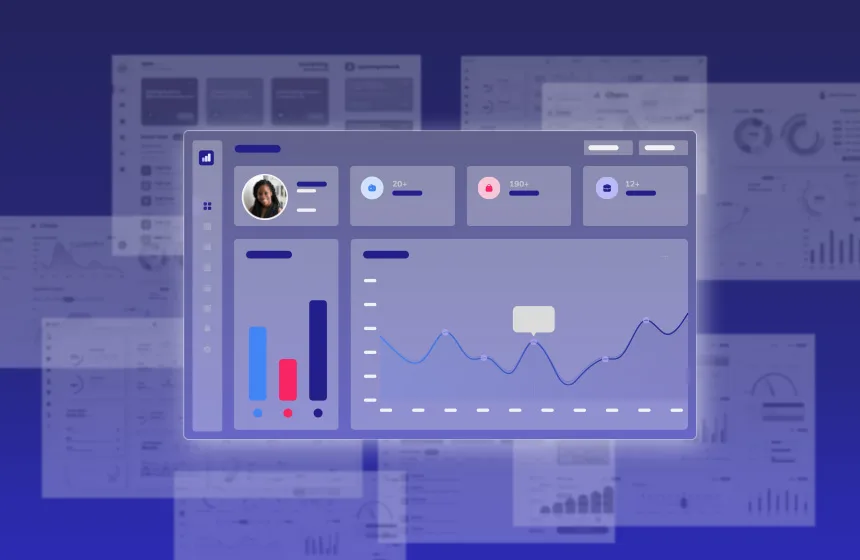Accelerate deals and increase win rates with the leading enterprise AI demo platform.
Top Reasons AI is Difficult to Demo (And What You Can Do About It)

September 23, 2025
Table of Contents
AI software doesn’t demo like traditional SaaS. It’s probabilistic, not deterministic. Dynamic, not static. And while that variability makes AI powerful, it’s also what makes it risky to show live.
If you’re in Solutions or Presales, you’ve probably lived this firsthand. You fire up an AI demo, enter a prompt, and cross your fingers. Sometimes it works like magic! But sometimes, it’s chaos.
So how do you showcase the power of your AI product while maintaining credibility, consistency, and trust? And how do you enable your sellers to deliver that experience repeatedly, at scale, without relying on live infrastructure or burning engineering time?
That’s where demo technology plays a critical role.
Four Common AI Demo Fails
What makes AI software so difficult to demo? Let’s break it down.
1. Unpredictable Outputs
AI doesn’t give the same answer every time. Large language models (LLMs) can vary in their outputs, based on phrasing, punctuation, or even whitespace. Since LLMs base their responses on pattern-matching, some answers may just be inaccurate.
When your demo hinges on AI returning something compelling — and it doesn’t — the moment’s lost. You may not get it back.
2. Training Data Gaps
Most AI systems are only as good as the data they’re trained on. In niche industries, that’s a major challenge.
You might not have representative data for a specific customer segment or use case. You might have sensitive information you can’t show. And building a tailored, data-rich experience for your demo from scratch is slow and expensive. This process doesn’t scale for most companies doing dozens or hundreds of demos.
3. Performance Variables
AI systems often depend on backend services or heavy computation. That means latency, and latency kills demo momentum. On one hand, you don’t want too much lag time to impact your buyer’s perception on product quality. On the other hand, getting an immediate response might make technical buyers skeptical about if what you’re showing is “real” or manufactured.
A happy medium? Show how hard your product is working without making your prospect wait too long.
4. Storytelling at Risk
Good demos tell a story. But AI introduces variability that makes storytelling fragile.
Change the input, and the story shifts. Change the data, and the outputs look different. Suddenly the clean narrative you prepped goes sideways — and the demo becomes a live troubleshooting session.
The Hidden Cost of AI Demos: Rework and Risk
Many AI teams try to demo their live app directly and run into similar problems over and over:
- One-off demo environments that take days to build
- Backend dependencies that introduce slowness or failure points
- Constant engineering asks to support Sales
- Sellers and SEs forced to rehearse dozens of edge cases to stay ready
None of that scales. And when a demo fails, it damages buyer trust in your entire AI story. In many cases, a self-contained demo environment can provide the guardrails needed to tell an accurate product story without the risk.
How Demo Tech Enables Scalable, Reliable AI Storytelling
Modern demo platforms are purpose-built to solve this problem. They give Solutions teams the tools to take control of the experience, without sacrificing authenticity.
Create Guardrails Around Your AI Demos
With demo tech, you can capture and control the AI experience.
Instead of querying your live production model during every demo, you can show pre-generated outputs that illustrate your value clearly and consistently. These can be interactive, dynamic, and even tied to specific datasets — but they won’t go off-script.
That way, you can highlight what’s real and what’s coming, while making sure the narrative doesn’t derail.
Inject Relevant, Safe Data
One of the hardest parts of AI demos is data prep. Demo tech lets you inject synthetic or anonymized datasets that reflect a buyer’s industry, use case, or scale — without exposing real customer data or building new databases or demo environments from scratch.
Prepping the right data takes minutes, giving you all the relevance without the risk.
Enable Reuse Without Rework
Without demo tech, SEs can spend weeks building a single, one-off demo. With the right tooling, they can templatize those flows and reuse them across teams, verticals, and even go-to-market functions.
That means faster ramp time for new reps, consistent messaging across deals, and fewer bottlenecks on engineering.
Simulate the Magic, Without the Fragility
The best AI demos don’t try to hide the complexity of your product — they abstract it in a way that makes it digestible.
Demo tech can help you simulate decision paths, autotype prompts, and show “behind the scenes” logic that helps explain how your AI model works. You can build demo flows that feel magical but remain grounded in reality.
Why Great AI Demos Matter Now
The rise of AI software means a shift for buyers and a new kind of challenge for Presales.
Buyers still expect proof. They still want speed. And they want confidence that your product won’t break under pressure.
Demo technology helps teams thread that needle. You can build AI-driven demos that feel real, tell a consistent story, and scale across go-to-market — without risking a live failure or overloading your engineering team.
Key Takeaways
- AI demos are inherently unpredictable due to variable outputs, training data gaps, and performance dependencies, making them risky to run live.
- Traditional demo methods don’t scale for AI products, often requiring heavy engineering support and risking trust with inconsistent results.
- Demo platforms give Presales and Solutions teams control, allowing them to create consistent, repeatable AI demos that highlight product value without live infrastructure.
- Synthetic and anonymized data can power relevant AI demos without exposing sensitive information or requiring fully built environments.
- With the right demo tech, teams can simulate AI’s magic while maintaining credibility, enabling scalable storytelling across sales motions.






